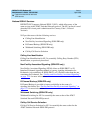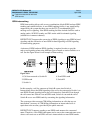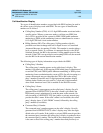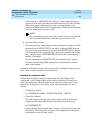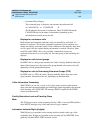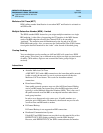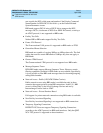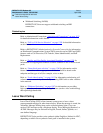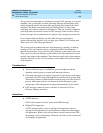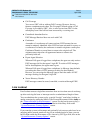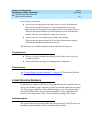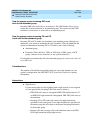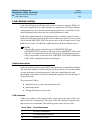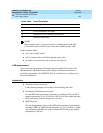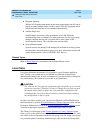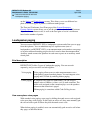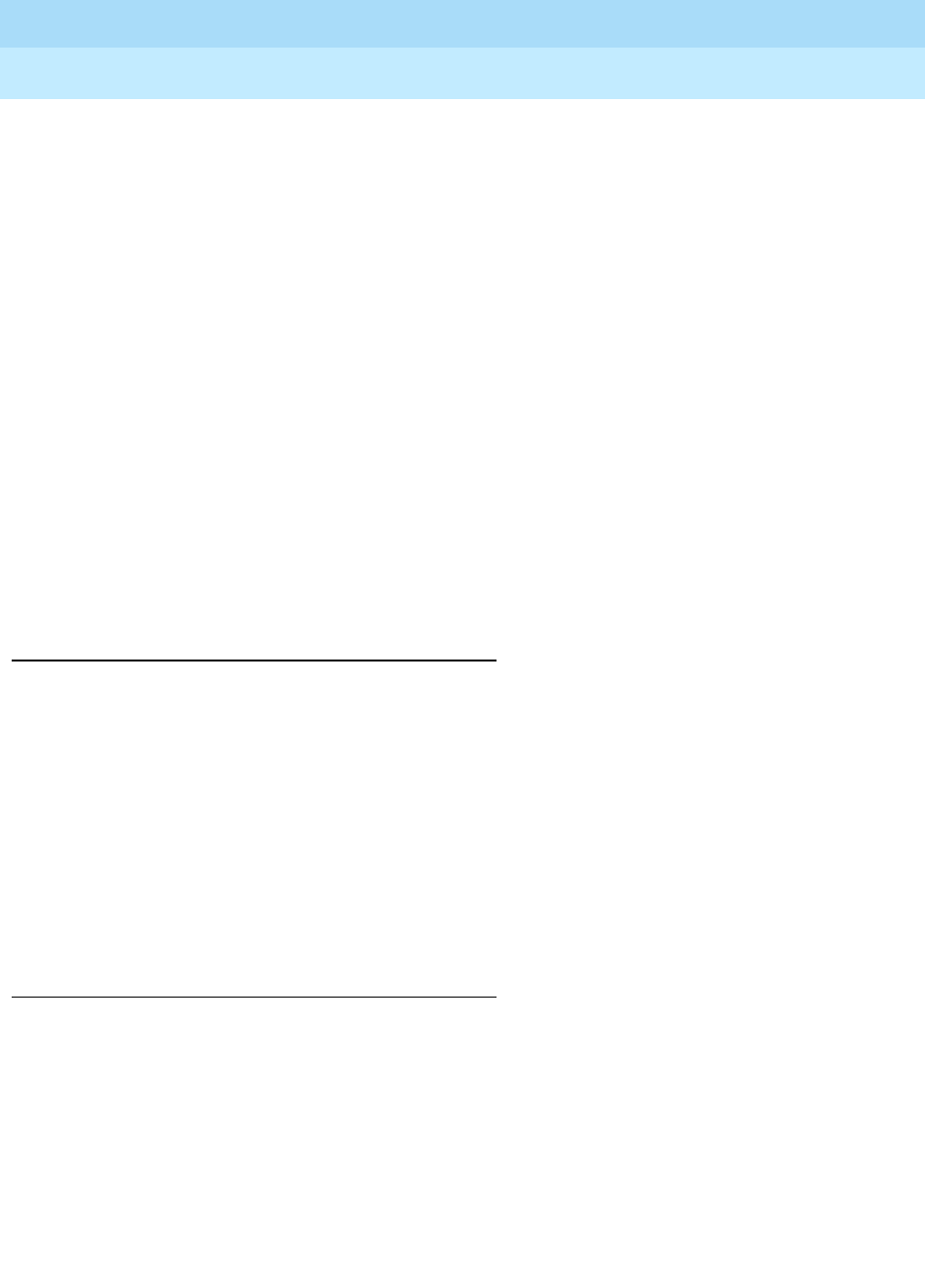
DEFINITY ECS Release 8.2
Administrator’s Guide
555-233-506
Issue 1
April 2000
Features and technical reference
1409Leave Word Calling
20
The system can indicate that one telephone received a LWC message on a second
telephone. The system lights a remote Automatic Message Waiting lamp at the
remote telephone and the Automatic Message Waiting lamp lights at the called
telephone. The Remote Automatic Message Waiting lamp is a status lamp
associated with a button assigned for this purpose. Thus, an assistant’s telephone
could light when an executive receives a LWC message. If the executive calls to
retrieve messages, the assistant knows at a glance if any messages have been left.
Users without telephone Display can have their messages retrieved by a
system-wide message retriever or by covering users in their Call Coverage path.
They can also use Voice Message Retrieval.
The system restricts unauthorized users from displaying, canceling, or deleting
messages. The Lock function restricts a telephone and the Unlock function
releases the restriction. Users activate Lock by dialing a system-wide access code.
They cancel Lock by first dialing a system-wide access code and then an Unlock
security code unique to the telephone. These functions apply only to the telephone
where the function is active. You can assign a status lamp to show the lock status
of the telephone.
Considerations
■ You can administer up to 10 telephones (or nine telephones and the
attendant console group) as system-wide message retrievers.
■ If the stored-message level reaches 95 percent of capacity, the status lamps
associated with all Coverage Message Retrieval buttons in the system flash.
These lamps continue to flash until the stored-message level falls below 85
percent. Authorized retrievers can selectively delete messages to gain
storage space. Old messages are not purged automatically by the system.
■ LWC messages cannot be stored, canceled, or retrieved for Vector
Directory Number extensions.
Interactions
■ AUDIX Interface
LWC Cancel cannot be used to cancel an AUDIX message.
■ Bridged Call Appearance
A LWC message left by a user on a bridged call appearance leaves a
message for the called party to call the primary extension for the bridged
call appearance. When a user calls a primary extension and activates LWC,
the message is left for the primary extension, even if the call was answered
at a bridged call appearance.



